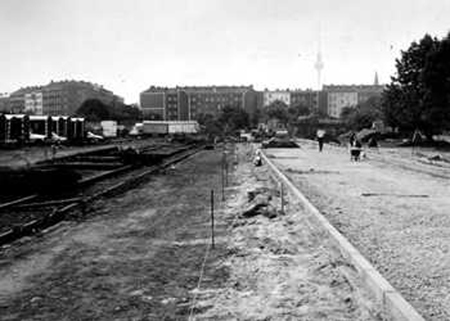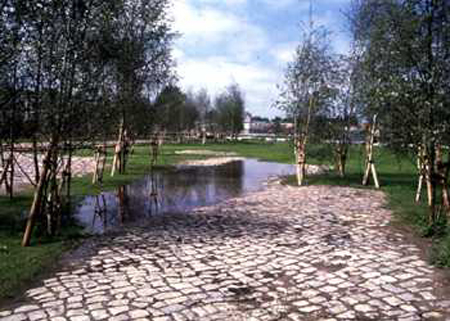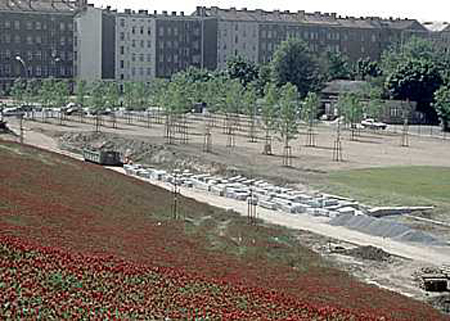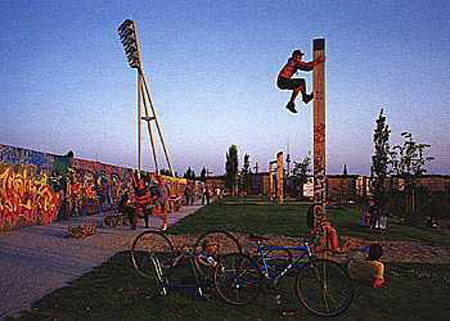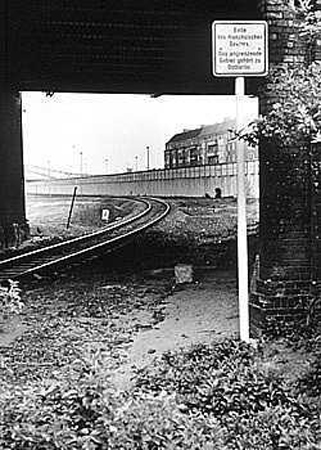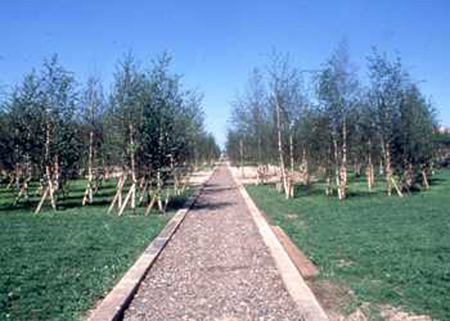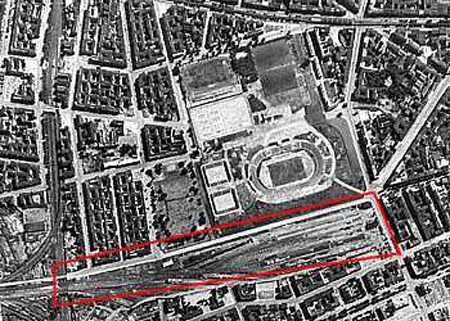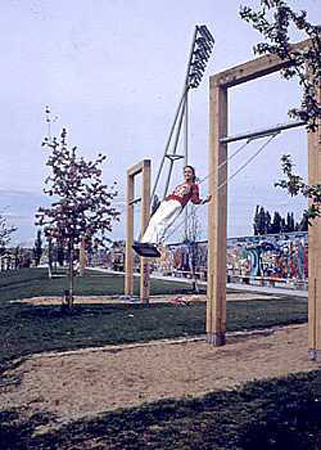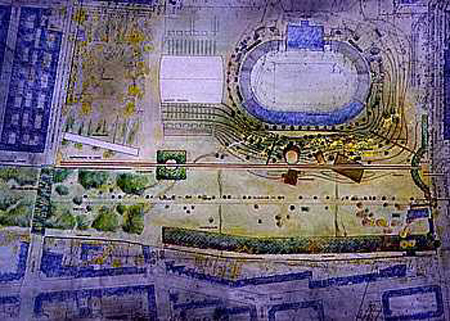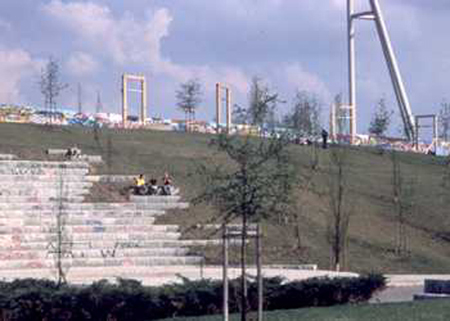Previous state
The site occupied by the Mauerpark (Wall Park) has been used for different purposes over the years. Part of it served as a military training ground in the first decades of the last century and in about 1872 a goods station was built there, which expanded over the years. After the First World War, the army gave up possession of the training ground and it became the site of sporting facilities and small gardens. During the thirties, a small development of shacks was erected. In 1945, the border between the French and Soviet sectors was marked out. It passed through the former military training ground and the Eberswald goods station. Following the building of the Wall in 1961, the area became a security zone.Aim of the intervention
The idea of building a green space came about a result of the demolition of the Wall in 1989. The creation of the park was apparently spontaneous. A few days after the Wall was dismantled, the residents in the neighbouring districts -Wedding, in the sector which previously belonged to West Berlin, and Prenzlauer Berg, in the eastern sector of the city- began planting trees and shrubs. Over the following months the idea of a linear park which would stretch along the 96 miles where the Wall one stood, met with success; it was to be an amalgam of green spaces free from cars (an idea supported by the Grüne Liga). However, in the end, it was considered unfeasible because, among other reasons, the owners of the site began claiming their rights to the land. The Mauerpark project survived due to the fact that it was a public space which had been occupied by Eberswald station before being requisitioned for the building of the Wall. The idea of the park received its definitive impulse when the Alliance Foundation for the Protection of the Environment (Allianz Stiftung zum Shutz der Umwelt) decided to pay the bulk of the building costs. The future park was to be a large green area located at the point where the districts of Prenzlauer Berg, Wedding and Berlin Mitte converge: a heavily built-up area.Description
The idea of the park is simple: the Mauerpark is a "clearing" in the middle of Berlin; an urban space which, unusually for a big city, remained empty for almost thirty years. It has been preserved as such and has remained open, as if it has simply been freed of tanks, walls and sentry boxes. The site had to be cleared of toxic waste, as the land had been contaminated by a product which prevented the growth of plants in order to ensure a full range of vision over the area. The toxic earth was removed and replaced during autumn 1993 and, during the following spring, children in the area were invited to take part in a tree-planting scheme. Natural elements which had been eliminated during the preceding period, have been reintroduced, such as a birch grove. A series of geometrical forms establish a sequence of spaces inside the park along its main walk: the amphitheatre, a pond... A series of stone blocks have been set out shielded by an ash grove. Spaces have been left between these mineral elements to allow wild plants to become established. The only concession to the topography was the creation of a hill rising out of the rubble left by the Second World War. The southern side is populated with flowering trees and rose bushes. A fragment of the Wall has been preserved which has been brightly painted with symbols and slogans as a reminder of the past.Assessment
The Mauerpark has unquestionable and strong symbolic associations: it represents the reconquest of an open, green space in the prohibited zone between the sectors of the divided city.The park is the public space resulting from the unification of the city; it is, therefore, the commemorative imprint of the fall of the Berlin Wall.
As a green area, the park affords the pleasure of walking on a wide expanse of lawn and also features attractions for inhabitants of all ages: an amphitheatre for open air events, areas for playing sports, peaceful areas to sit, such as the hill which affords views of Berlin. The park also includes an educational farm for its younger visitors, which was called for by the residents of the neighbouring districts.
[Last update: 02/05/2018]


